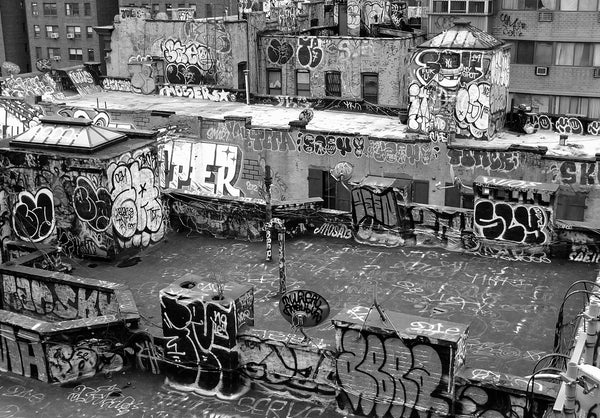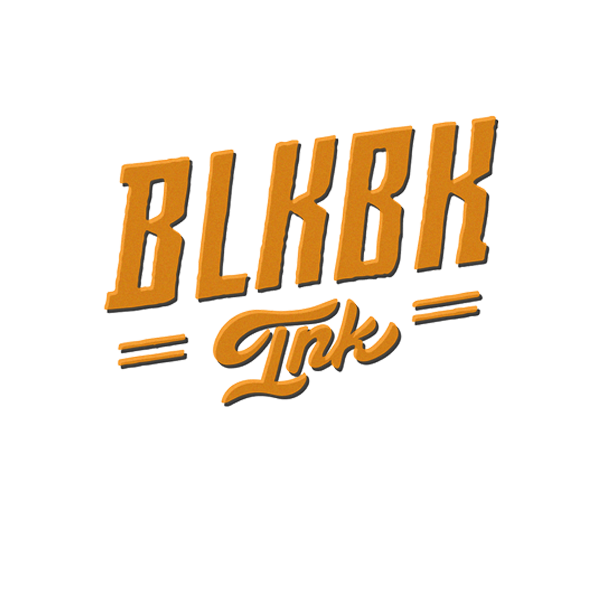How New York graffiti became one of the four elements of Hip Hop
This issue of Letters is part of a series on graffiti. Read the introduction here.
Only three years after graffiti culture took off in Philadelphia, it had moved up the coast. In New York City, graffiti would join a perfect storm of cultural upheaval—a media capital, home to a melting pot of cultural influences, stirred by impending societal collapse. Against this backdrop, graffiti would become one of the base elements in the late-20th century’s defining cultural movement: hip hop.

The origins of graffiti in NYC
In the late ‘60s, legends like Taki183—a foot messenger who tagged a modification of his name appended with his street number wherever his work took him—had started a tagging culture in NYC. But when Topcat 126 moved up from Philly, and brought his Gangster Hand with, style became ascendant.
New York in the ‘70s was the perfect canvas for graffiti artists. Like every city in America, New York had seen an exodus of residents to the suburbs in the post-war years, thanks to the devastating effect of interstate highway construction. New migrants to the city took their place—black Americans from the southern states, Puerto Ricans and other Caribbeans. This coincided with the decline of American industry, which saw workers taking to the streets in protest, alongside civil rights protesters, gay rights protesters, and Vietnam war protesters. The city struggled to keep up with the demands on civil services; by the mid-‘70s, New York City was broke.

This regression of formalized civil society opened up cracks for the kind of urban anarchy that can only exist when laws no longer enforce property rights, and only occupancy can. By writing on wall, graffiti writers could occupy—and therefore own—the city. But this was no utopia. In 1977, the city experienced a day-long blackout, leading to widespread looting. Crime skyrocketed. Abandoned buildings burned. The city’s population declined by one million.
And that opened up just a enough space in the crowded city for music, dance, and art.
 The birthplace of hip hop
The birthplace of hip hop
Why graffiti was part of hip hop
In 1973, DJ Kool Herc, a Jamaican-born resident of the Bronx hosted the first hip hop party in the rec room of his tower. Soul-music beat breaks met Jamaican bass culture in the middle of two turn tables. It was the beginning of a cultural phenomenon. Over the balance of the decade, party emcees would start rapping, break dancers would expand their repertoire of moves, and graffiti artists would invent and reinvent style. Together, these art forms were the four elements of hip hop: DJing, emceeing, break dancing, and graffiti writing.
But what does graffiti really have to do with hip hop? Using Kool Herc’s foundational DJ method as, well, a foundation, it makes sense that rap and break dancing are part of hip hop—breakers and rappers both do their things to the beat. But graffiti? That doesn't need a soundtrack. And kids were writing before ‘73.
Is graffiti’s part in the hip hop milieu just a matter of temporal coincidence and cultural overlap?
That's part of it. But graffiti and music go way back—to before turntables, before letters even, to the origins of dance, music, and writing on walls.
“As a man danced so the drums were beaten for him.”
- Chinua Achebe, book Things Fall Apart
Before we ever banged on a drum, we moved our bodies. Moving in unison was affecting, hypnotic, connecting—it lit up our sympathetic nervous systems. Moving in time makes it easier to move in unison—we produced sound, shuffles, thuds, slaps, feet on floor and flesh on flesh. We amplified those auditory cues by clapping, by stomping, by hitting sticks against each other, by moving into closed spaces that amplified those cues further. We painted those spaces to mark their acoustic qualities. This cave carries sound like horse hooves, this one like hands clapping.
That’s the origin of cave paintings—of the first graffiti, the first markings, the first stories, the first proto-writing.
Before there was writing, there was music. Before there was music, there was dance. As a man danced so the drums were beaten for him. And as we beat the drums for those who danced, we made visual notes for future reference: “this is the spot to get down—beats slap in here!”
Back in New York in the ‘70s, writers wrote to the rumble of elevated trains. The perfect canvas: set above the streets, big enough to see from afar, and moving through the city; a writer who painted the train got up. So they lit them up with end to end burners, covering entire train cars in big, BIG letters.

New York graffiti’s style evolution began with writers biting Topcat126’s Gangster Hand, re-branded for NY as Broadway Elegant. But in 1972, Super Kool 223 hit on an innovation that took graffiti to new levels—he popped the paint tip off his spray cans’ crimp-on valve, and replaced it with a tip from a spray foam can. With that he could blow paint at unprecedented rates—fast enough to fill in big block letters the size of a train car.
For the next 20 years, New York’s trains would provide a canvas for generations of artists—legends like Kase 2 and Futura 2000, who would take graffiti writing in wild new direction that put style above everything.
Those styles, like clapping hands painted on the walls of a cave, told everyone that New York was the spot. Hip hop was here.
New York graffiti goes home - and everywhere
The New York style of graffiti writing spread, thanks in part to the cultural currency of hip hop. In Philadelphia, writers adopted the filled-in style of NY throw ups, but modified it to maintain the emphasis on speed and verticality. Philly writers didn’t take their time writing pieces in secluded spots—their writing was in your face, thrown up in a blitz. In LA, meanwhile, the New York style also spread. But LA lacked tall walls and overhead trains—LA graffiti, like everything in LA, followed the cars, taking over locations where drivers could see it. And it maintained that sharp, Blackletter edge, characteristic of pachuco writing.
Graffiti had emerged as a pan-US culture. And it was going global.
Check out graffiti-inspired fonts from BLKBK here.
